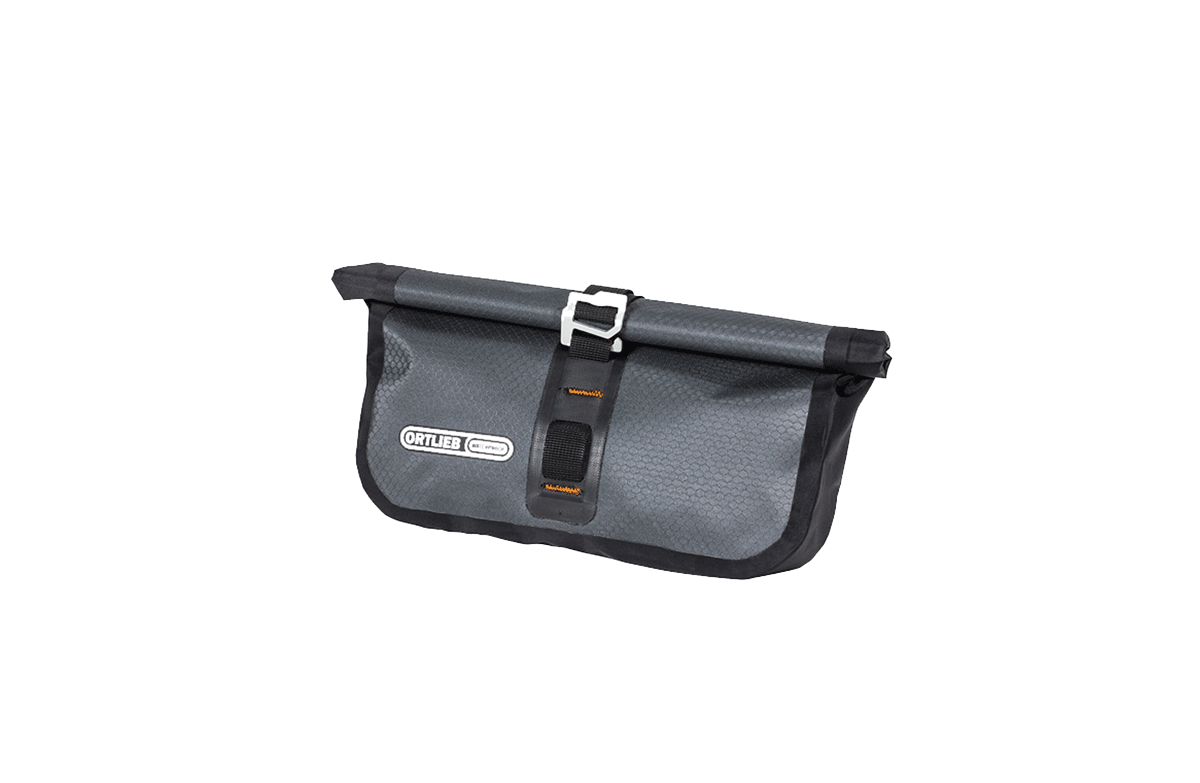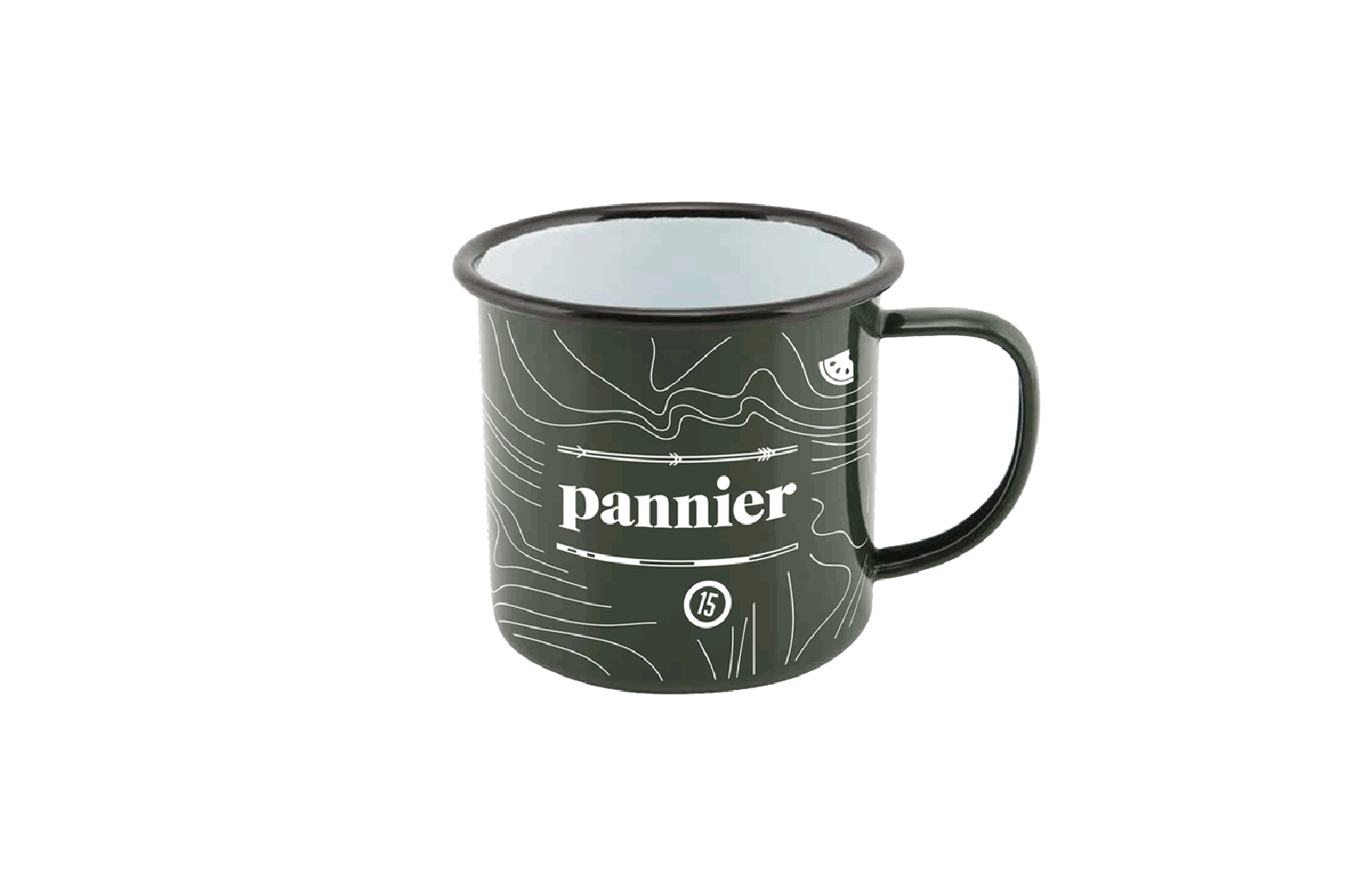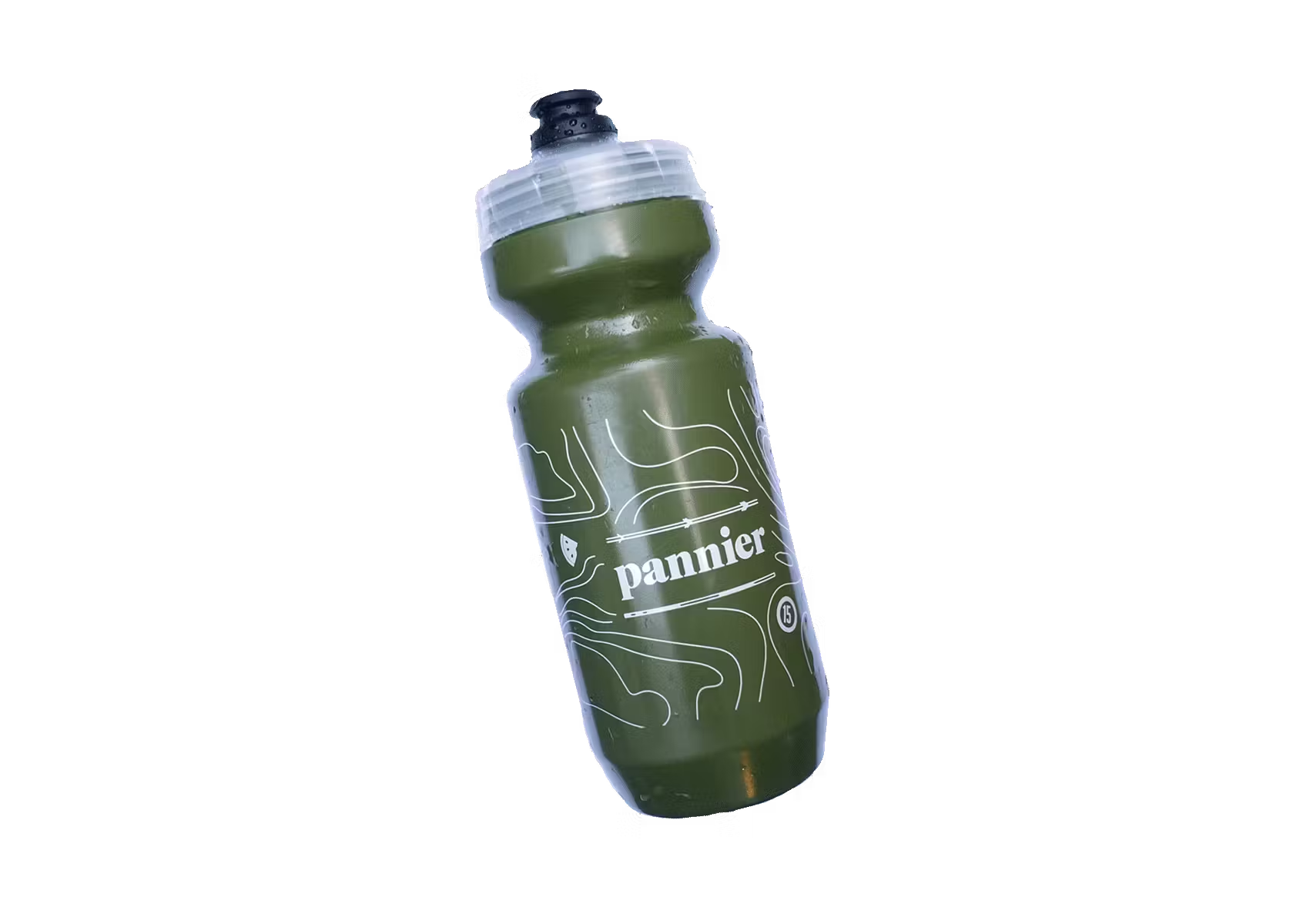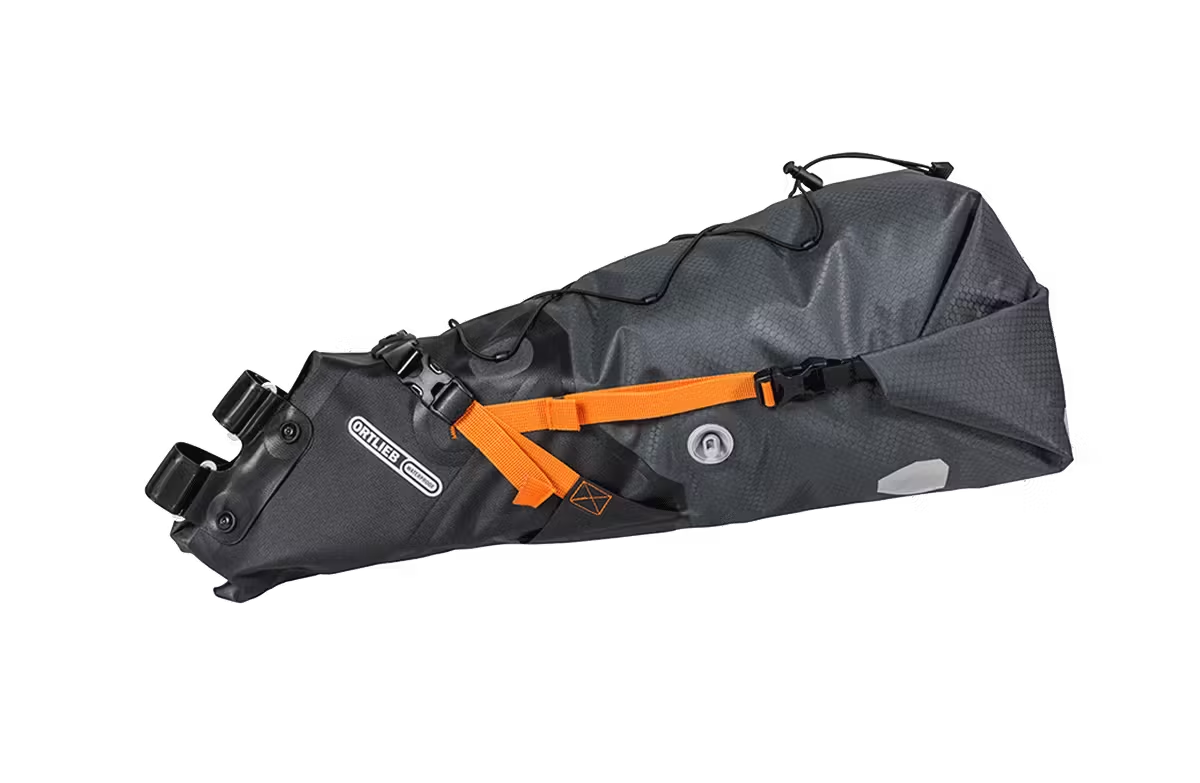
Our untouched white ribbon of track meandered across the frozen moorland moonscape from the platform at Corrour – the West Highland Line’s summit station – where the six of us stood chilling, lace-deep in fresh powder. At 408M+, Corrour is the highest, remotest station in the UK and it didn’t-half-feel an outlier. There are no roads here, just an alluring dot on the map – “the pimple on the bum of the universe” – lost in a sea of contours, dotted paths and estate tracks which, importantly for us, included The Road to the Isles – an old-established Drove Road that we would ride south.
Beneath our fresh tyre tracks, amongst the snow-capped Munro and Corbett peaks, were the foot and hoof-prints of the thousands of drovers and cattle that once journeyed from the Highlands and Islands to the markets (trysts) in Falkirk, across this once trackless wild land. Stunning surroundings, and serene riding but for six loaded bikes crunching through frozen peat-water puddles. Our dash to Dalwhinnie Distillery across, through and over the Grampians was set to be a challenging 84 Hours…

Drover [n.]
– a person whose occupation it is to drive cattle and sheep, namely to market.
– once a vivid and vital part of the life of Scotland, peaking in the 150 years between 1700 and 1850, droving often meant long, slow journeys through the remotest, untracked area of the Highlands.



“Always carry a flagon of whisky in case of snakebites, and furthermore always carry a small snake…”
Six of us met at Cloud 9 Cycles in Central London, one Sunday in late November, to prep all of our bikes, bags, clothing, kit-lists and supplies before boarding the 12-hour Sleeper Train to Scotland’s Central Highlands at 21.00. Wintry bikepacking trips pose enough challenges and restrictions – adverse weather, slow-going terrain, restricted daylight hours and re-supply – to require sensible planning, especially in the void we were heading to. There was nothing. Zilch. Diddly-squat. Where sporadic cafes or shops were dotted, they were a vast detour or shut – out-of-season, out-of-supplies – and where the remote, cosy bunkhouses were sited, there was nowhere to find food. However, the planning is all part of the fun: route, back-up and ‘shortcut’ options; emergency shelter; escape and one-pot meal plans. It’s a case of carrying-in everything you need for long days in the mountains and we were used to it by now, happy to stuff packs full of oats and nutella, mackerel and parsley, gnocchi and pesto, coffee, single-malt, and a couple of emergency-dehydrated meal packs. For this trip, I’d settled on meals like traditional Scottish cullen skink, stovies and cranachan from an old Highland cookbook; visualising where we might group-cook each dish whilst jotting ingredients down in my tour journal…



…”why are yous getting off at Corr-our?! It’s the pimple on the bum of the universe!”
Our plan was to ‘go for a w̶a̶l̶k̶ ride’ through the wintry, gloomy Grampian Mountains of Scotland. To track the old-established north-south drove roads and, in true drover style, explore the alluring voids in between. After alighting the Sleeper Train at Corrour 09.00 on Monday morning, we then had a Sleeper Train booked back from Bridge of Orchy at 21.00 on Thursday evening: 84 hours to roam the moorlands, mountains and gravel tracks of this remote region of the Central Highlands. Our squad of six was made up of Brother Cycles’ Will, friends Jordan and Taylor, Filmmaker Luke, Pannier Dave and I. Four of our original Beulah group that boarded a sleeper train to Scotland three years ago.
Our aim was to test some route options for our new Highland Drover bikepacking tour, put Brother Cycles’ new Mehteh all-road/gravel bike to the test proper, and ultimately make a film of our exploits. As with all our Pannier Tours this journey wasn’t about kilometre-krushing, we were keen to embrace both the spirit of both Vacilando – an untranslatable Spanish term for the act of wandering when the experience of travel is more important than reaching the specific destination, and the Highland Drover – a person whose occupation it is to drive cattle and sheep, namely to market. Once a vivid and vital part of the life of Scotland, peaking in the 150 years between 1700 and 1850, droving often meant long, slow journeys through the remotest, untracked area of the Highlands.
Grampian [n.]
– Gaelic portmanteau of “Gruiam” (Gloomy) and “Beinn” (Mountains) after the mist and cloud that shroud the mountains.






“The drover life was a tough one – needing to know perfectly the routes which lie over the wildest tracts of country and to conquer ‘natural barriers of sea, mountain and river on their journeys from Highlands to Lowlands’ … There are few glens, even few easy routes leading to the South over moor or upland country, which have not known the tread of driven cattle on the way to the Tryst”
Drove roads are widely known as the oldest thoroughfares and route network in Britain. “At their height between the Middle Ages and the Industrial Revolution, the roads linked the wild corners of Britain – with the growing demands of towns and cities, where livestock could be brought to market.” The Road to The Isles, which we started out riding from Corrour, was once an integral route given that the best supply of cattle came from The Isle of Skye, outer Islands and remote north-west, largely due to their coastal climate and availability of grass in the abundant verdant glens. Skye became the main gathering point for cattle “where [the beasts] were collected into droves of 100, 200 or 300, with one drover to each 50-60 beasts … before the drove would creep slowly southward day-after-day … plodding slowly on towards Falkirk and their unknown fate.” The Falkirk Tryst (market), just south of Stirling, was “where the roads leading by the shortest course from every quarter of the Highlands towards England naturally unite … and here came dealers from Yorkshire, the North of England and the Borders to meet the drovers of Uist, Skye, Lochaber, Ross-shire, Angus and Argyll” to trade sell their cattle and sheep. A typical daily drove would cover 10-12 miles, with journeys to Falkirk taking up to a month.



“Many a water hazard lay between the drovers and the trysts. The absence of bridges over the rivers of the Highlands was one of the main obstacles to inland communication in Scotland in the seventeenth and eighteenth centuries … difficult as the crossing of larger rivers might be, the smaller ones and many a hill stream would at times present almost greater problems. Too shallow to swim and too rapid to ford…”


“And there’ll be meal-kail and custocks,
Wi’ skink to sup till ye rive…”
A local speciality, from the town of Cullen on the Moray Firth.
Trad Recipe // Finnan Haddie, Onion, Potato, Butter, Milk, Pepper & Salt
Bikepacking Recipe // Smoked Mackerel, Onions, Powdered Milk, Pepper & Salt, Sweetcorn, Kale, Bay Leaves, Parsley, Cheddar, Bread Rolls…
“Skin a Finnan Haddie, and place in a pan with sufficient boiling water to cover it. Bring to the boil and add a chopped onion. When the haddock is cooked, take it out and remove all the bones. Flake the fish and return all the bones to the stock. Boil for one hour. Strain the stock and again bring to the boil. Boil a pint of milk separately and add it to the stock with the flaked fish and salt to taste. Boil for a few minutes. Add enough mashed potato to make the soup a nice consistency, with a tablespoon of butter, and pepper to taste, and serve”









Our plan didn’t quite go to plan. We blamed Mercury being in retrograde which, on a positive note, actually made for three nights of fantastic full-moon light – majestically lighting the snow-capped Grampian peaks. But, that’s typical of the reconnaissance (recce) trips we do: every one km was two; every hour flew by in half-an-hour; every track we thought might be rideable wasn’t; every one metre of peat bog was actually ten. Our Dalwhinnie Distillery dream was over by about 15.00 on day one, once the light started to fade, the rain drove from all angles, the peat bog route around Loch Ericht lengthened by the minute and Benalder Cottage bothy, beneath the imposing dusky silhouette of Ben Alder, was too well-placed by the time darkness fell to not take shelter and start the loch-side cullen skink bubbling. The ornate bridge over the raging Alder Burn was our last hurdle. A tiny engraved sign on a rock, told me the bridge was erected in 1987 by “Tim Winter, Alec Cunningham and the Mountain Service of Ranch School boys, in memory of David Donald and his daughter who both died in 1980. Made possible by the RAF Lossiemouth, who air-lifted the materials into this remote site”. Integral interventions in these remote landscapes leave a lot for us overlanders to be grateful for; a backcountry river that the drovers of old would have often forded and swum with their herds to avoid the turnpike fees on main routes and bridges.
Re-checking the OS map under down-hood and headtorch-light, Loch Ericht’s western shore was still 30km long and after trying the next morning to skirt along the path, things weren’t looking great for our onwards journey: steep, sketchy cliffs and overgrown, less-than single track. A retrospective read of my Central Highlands Mountaineering book said “a path, theoretical in places, leads along the loch-side towards Dalwhinnie … but in planning for this it is perhaps worth remembering the lochs considerable length, and the fact that its steep-sided narrowness is apt to make it at times a funnel for the wind which, according to one description, ‘would blow the boots off a guardsman’”. A number of years’ experience, and visualising a track from a sprawled, stitched set of OS maps at Pannier HQ tends to be good for gauging potential, but it’s only once you’re immersed in the map, amongst the mountains, wringing socks, drying gloves, laughing about certain sections that it’s possible to really picture the next kilometres. There is no way the group could have conquered the continuing loch-edge track during the day, let alone the previous night as per our original plan. Alder Burn would be our dead end. We made the decision to head back to the sanctuary of the Corrour Estate, and Loch Ossian SYHA – a “convenient centre for the neighbouring hills and starting-point for long cross-country expeditions”. From there, we’d cross the bleak expanse of Rannoch Moor known of old as “that thorofare of thieves”, overnight at one of the most historical drover and traveller intersections – Kingshouse Inn, Glencoe – before heading south on the stunning West Highland Way gravel tracks to Bridge of Orchy station: our ticket back to civilisation.



“…it’s basically a Scottish Tiramisu”
A very old dish, commonly served in farmhouses on festive occasions.
Trad Recipe // Oatmeal, cream, sugar and flavouring to taste
Bikepacking Recipe // Oatmeal, canned whipped cream, whisky, forest fruits, glace cherries
“Toast some coarse oatmeal lightly before the fire. Beat some cream to a stiff froth and stir in the oatmeal. Do not make it too substantial. It may be sweetened and flavoured to taste. The toasted oatmeal gives an agreeable, somewhat nutty, flavour to the dish. A few handfuls of raspberries buried in a bowl of cranachan makes an excellent sweet…”






“The name and its interpretation suggests a forgotten story that must have been worth telling. Leum Uilleim … stands with a lesser neighbour in isolation overlooking the Moor of Rannoch and the West Highland Railway. The lonely Corrour Station is in its evening shadow”









“Rannoch Moor is indeed an inconceivable solitude; a dreary and joyless land of bogs, a land of desolation and grey darkness”
The drover life was a tough one – needing to know perfectly the routes which lie over the wildest tracts of country and to conquer “natural barriers of sea, mountain and river which [they] faced on their journeys from Highlands to Lowlands”. Their remote route choices were for a number of reasons: freedom of passage and avoiding the increasing fees of the Turnpikes, bridges and infrastructure; the availability of wayside grazing and shelter; and the need to avoid political instability nearer the towns. Their “knowledge of the country had to be extensive and intimate, while endurance and ability to face great hardships were essential – most of the drovers did the whole journey on foot … resource and enterprise were called for … knowledge of cattle was needed … finally, honesty and reliability were needed for the responsible work entrusted to him.” Given the lack of availability of maps at the time, a drover had to rely on knowledge gained from former journeys or perhaps from other drovers – “it was not until at least 1750 that drovers traversing the hills of … Rannoch could do so with confidence and security” for example. Somewhat ironically, General Wade and Telford’s improved road networks as part of the Military Road and Commissioners for Highland Roads and Bridge programs during the eighteenth century, which “previous to 1742, were merely the tracks of black cattle and horses”, were affecting the drover movements for the worst. Less places to roam unrestricted, less places to find wayside grazing, more tolls to avoid, higher fees at Inns and … importantly “the gravel of the new roads, they said, hurt the feet of the cattle and wore down their hooves”.
From the mid-nineteenth century, it was also increasingly apparent that social mobility and conditions in the remote areas of the Highlands were an issue – transport was seen as a pressing need – and so the idea for a 167 mile line from Glasgow to Inverness by way Rannoch Moor, Glen Coe and Fort William was first aired in 1883. In January 1889, seven men planned a reconnaissance trip from Spean Bridge on a forty-mile expedition across this once wilder terrain we were exploring by bike, to Rannoch Lodge in the depths of winter, to assess the possibility of the current line. According to one account, “in driving sleat, the men set out on their crossing, seemingly their most useful piece of equipment being an umbrella. Only one of the seven had any previous experience of the Moor and it was not long before they were separated and in grave difficulties”. This perilous event was apparently used to illustrate the remoteness of the proposed route, and the authorisation for the line, and in 1894 the ‘West highland Line’ we, and thousands of others each year, used to arrive in the heart of the Grampian Mountains was opened. Not without complexity: the solution to cross the 20 mile section across Rannoch Moor – “an inconceivable solitude; a dreary and joyless land of bogs, a land of desolation and grey darkness” – was to float the railway line using substantial foundations of turf, brushwood, soil, mountain till from the cuttings, and tons of ash. Corrour, originally the private station for Sir J S Maxwell’s shooting estate, opened for public use in September 1934.
“Kingshouse … a key point on the drove roads … at the meeting place of Glen Etive and Glencoe, of the road and older tracks leading across the moors, an inn has stood for centuries, offering such poor shelter or refreshment as it could afford to drovers, pedlars, soldiers and travellers of every sort about face the bleak stage southward, skirting the western edge of ‘that throrofare of thieves’ the Moor of Rannoch…”




“Of all the Scottish mountains, probably Buachaille Etive Mor wins the most admiration. Seen from the road at its base its soaring pyramid of naked rock, split into buttresses and towers, and tapering to a fine peak, is beautifully proportioned … the summit is named Stob Dearg (red peak)”






The development of the railways, like the West Highland Line, in addition to the rise of the road network and sea transport, and access restrictions from land-uses like deer stalking which meant “the conflict of interest between the proprietor of a Highland deer forest and a drover who sought to cross the hills with his beasts”, were all “making inroads on the drovers’ trade.” Buyers and sellers, that would have previously all met at the Falkirk Tryst were now travelling north to buy cattle direct, and making the most of “the growing practise of sending beasts south by rail from the Highlands and the grazing areas of the North” to the extent that “the closing years of the nineteenth century saw the last of the cattle and sheep droves passing over Wade’s old road … and about 1906 the last of the Skye droves”. Looking back, it was somewhat of a kick-in-the-teeth that we arrived to the these drove-lands by train; that we were riding some kilometres of Wade and Telford’s roads and tracks.
“In glacial times the Moor was ice-covered and fed by glaciers that streamed down from ice-caps of the surrounding heights … [now] innumerable burns, which rise in the heart of the Black Mount unite to form the River Ba – the ‘river of cattle’ – doubtless from old droving days”



“The Scots droving trade reached its peak about 1835, and its descent was short, sudden and complete… the very existence of the trade depended above all else on freedom of passage, freedom of wayside grazing and freedom of nightly stances … as the years went on, increasing population, a rising network of Wade and Telford’s roads, a rising standards of knowledge and growing skill in the management and cultivation of land, encroached more and more on these essential freedoms”
Connecting-up un-connectable places – those alluring voids on the map – had once again laid the foundations for an incredible 84 hours in the mountains. There is a reason that more established tracks, and now often bigger roads, exist through the mountains today – tried and tested routes across once wild, remote trackless lands resulting from the adventures and hardships of folk like the drovers over the last millennia – “throughout the Highlands, in hill pass, moorland and upland valley, as in the minds of men, the passing years increasingly dim and obscure the mark and the memory of the men and the beasts that once travelled the drove roads of Scotland…”
The most memorable adventures are always found taking the tracks-less-travelled. That’s why they’re called push bikes, after all…
Words & Illustration
Stef Amato
Photos
Dave Sear
Film (2020)
Luke Francis
Other Tourers (/ Hikers)
Taylor Doyle
Will Meyer
Jordan Gibbons
Resources
The Central Highlands – Campbell R. Steven (1968)
The Drove Roads of Scotland – A.R.B Haldane (1973)
The New Road – Neil Munro (1914)
Scottish Mountain Drawings – Alfred Wainwright (2006)
The Scots Kitchen – F. Marian McNeill (1929)
The bikepacking bags, sleep kit (fixed accommodation), cold-weather riding and off-the-bike clothing, group cookware, tools, spares, accessories and extras for a wintry 84 hours in the gloomy Grampians…
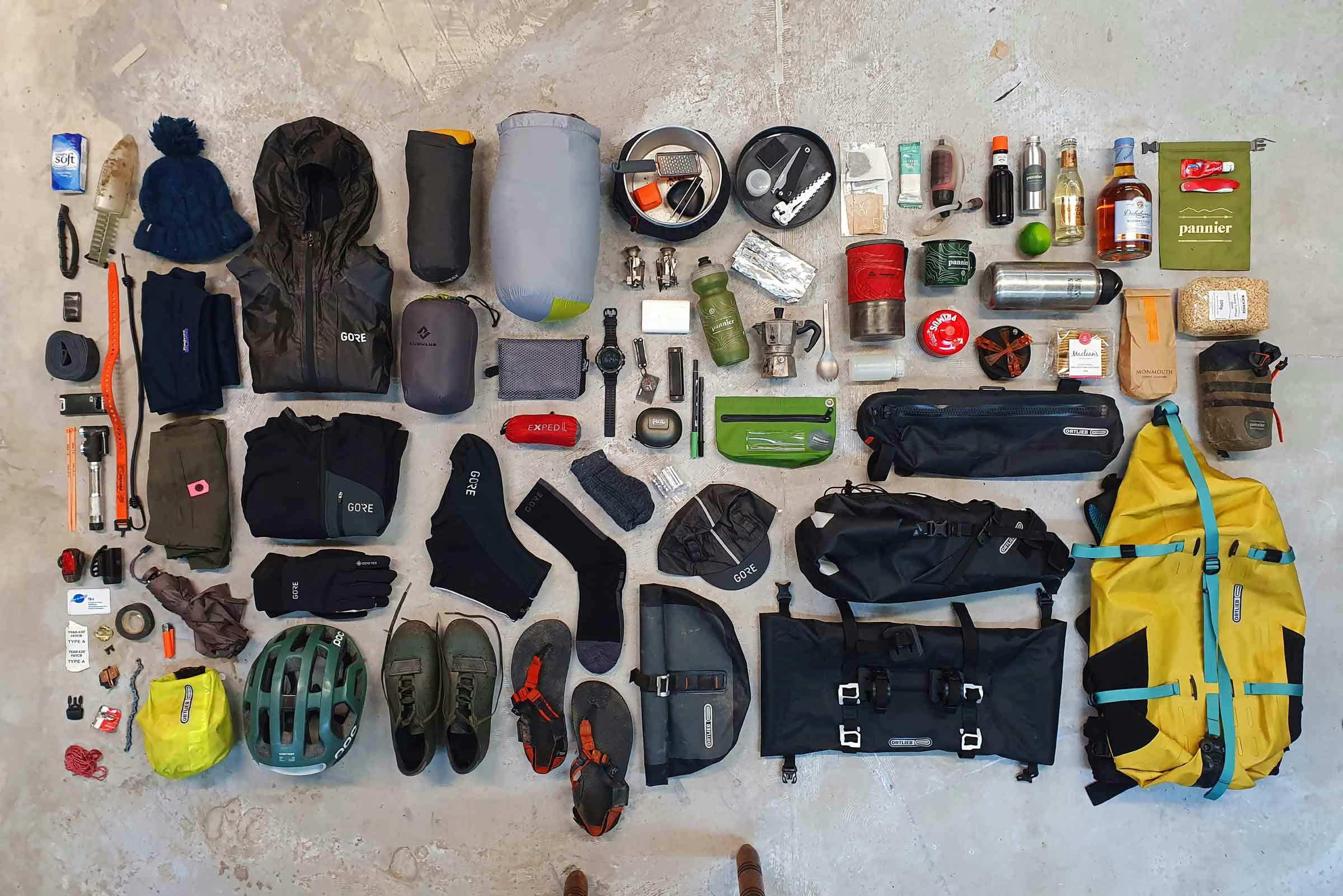
BIKEPACKING BAGS
Seat Pack – Black LE [Ortlieb]
Handlebar Pack – Black LE [Ortlieb]
Accessory Pack – Original [Ortlieb]
Frame Pack – Black LE [Ortlieb]
Backpack – ATrack [Ortlieb]
Stem Bag – Voila Snack Bag [Pannier x Wizard Works]
SLEEP / OVERNIGHT KIT
Sleeping Bag – Down Quilt 350 [Cumulus]
Sleeping Mat – NeoAir XLite [Thermarest]
Pillow – AirPillow [Exped]
Towel
Washbag
Wet Wipes / Tissues
Trowel
GROUP COOKWARE
Boiler Stove
Lightweight Canister Stoves x 2
Wind Guard
1.3L Pots x 4
Skillets x 2
Mug – Touring Mug [Pannier.cc]
Spork(s)
Knife
Foldable Ladel
Grater
Storage Pots & Bottle(s)
Coffee 1 – Bialetti
Coffee 2 – Dripper [GSI]
Water Carrier & Bottles [Pannier.cc]
Water Filter
Aperitif Bottle / Hip Flask
Gas Canister
Lighter
RIDING KIT
Helmet
Shoes – Explore [Rapha]
Jacket – Shakedry Insulated [Gore]
Bibs – Thermo [Gore]
Jersey – Windstopper Thermo [Gore]
Shorts – Randonee [Rapha]
Gloves – Thermo [Gore]
Socks – Thermo-Mid [Gore]
Overshoes – Windstopper Thermo [Gore]
Cap – Shakedry [Gore]
OFF-THE-BIKE KIT
Down Jacket
Sandals – Cairn Adventure [Bedrock]
Wooly Hat
Warm Leggings
Warm Socks
TOOLS, ACCESSORIES & SPARES
First Aid Kit
Multitool
Pump
Tyre Lever
Front Light
Rear Light
Bungee & Strap – Voile [Pannier.cc x Voile]
Cable Ties
Gorilla & Electrical Tape
Spare Inner Tube / Patch Kit
Tyre Boot
Spare Cleat & Bolt / Quick Link / Chain Length / Disc Pads / Bag Clip
Guy Line
MISCELLANEOUS
Watch – F21 HR [Pro Trek – Casio]
Headtorch
Leatherman
Carabiner Compass
Harmonica
Sketch Book
Pen Set
USB Battery Pack
Spare Batteries
Umbrella







